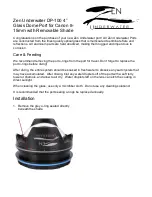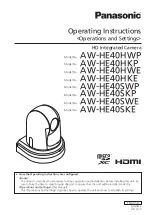
3
3.4 Electrolyte
The electrolyte for
NiCd batteries consists of a diluted
potassium hydroxide (KOH) solution (specific gravity 1.20 kg/litre
+/-0.01 kg/litre) with a lithium hydroxide component, in accordance
with IEC 60993:1989. The potassium hydroxide solution is prepared
in accordance with factory regulations. The specific gravity of the
electrolyte does not indicate the state of charge of the battery. The
specific gravity changes very little during charging and discharging,
and has limited relationship to the temperature.
When checking the electrolyte levels, a variation in level between
cells is not unusual and is due to the different quantity of gas held
in the separators of each cell. Before the battery is put into service
for the first time, check that the electrolyte level is not lower than
10mm below the “MAX” mark. There is usually no need to adjust
it.
If the electrolyte level is lower than the “MIN” level during service,
the battery should not be disconnected from the charger for a time
longer than 12 hours.
If visual inspection is not possible, due to restricted view, use
an electrolyte level testing tube to check the electrolyte level.
For further instructions, please contact your GAZ/EnerSys
representative.
GAZ
cells fulfil the requirements of IEC 62259:2003, para
7.9 for gas recombination efficiency.
3.5 Commissioning
The following instructions are valid for commissioning between
+20°C and +30°C. For different conditions please contact GAZ.
Charging with constant current is the preferred method.
If a site test is requested, it must be carried out in accordance with
IEC 62259:2003.
According to IEC 62259:2003, 0.1 C
5
A is also expressed as 0.1 I
t
A.
The reference test current It is expressed as:
Example:
0.1 I
t
A means:
10 A for a 100 Ah battery or
50 A for a 500 Ah battery
3.5.1 Commissioning with contant current
cells stored up to 6 months:
A commissioning charge is normally not required and the cells
are ready for service. If full performance is necessary immediately,
a commissioning charge of 10 hours at 0.1 I
t
A is recommended.
This procedure is carried out without the red low-pressure vents
installed.
During the charge the temperature should be checked
(see section 5).
cells stored for more than 6 months up to 1 year:
A commissioning charge of 15 hours at 0.1 I
t
A is necessary.
This procedure is carried out without the red low-pressure vents
installed.
During the charge the temperature should be checked
(see section 5).
3.5.2 Commissioning with constant voltage
A commissioning charge is normally not required and the cells are
ready for service. If the charger´s maximum voltage setting is too
low to supply constant current charging, divide the battery into two
parts and charge them individually.
cells stored up to 6 months:
A commissioning charge is normally not required and the cells
are ready for service. If full performance is necessary immediately,
a commissioning charge of 20 hours at 1.65 V/cell with current
limited to 0.1 I
t
A is recommended.
This procedure is carried out without the red low-pressure vents
installed.
During the charge the temperature should be checked
(see section 5).
cells stored more than 6 months and up to 1 year:
A commissioning charge of 30 hours at 1.65 V/cell with current
limited to 0.1 I
t
A is necessary.
This procedure is carried out without the red low-pressure vents
installed.
During the charge the temperature should be checked
(see section 5).
In the case of variable charging conditions, please consult your
GAZ
®
representative.
3.5.3 Commissioning at ambient temperature above +30°C
Constant current charging is the only appropiate method for
commissioning under such temperature conditions. During the whole
process the electrolyte temperature must be monitored.
The electrolyte temperature should never 45°C.
On exc45°C the charging should be temporarily interrupted
until the electrolyte temperature drops to +40°C.
Duration:
20 hours
Charging current: 0.1 I
t
A
In case of any interruption during the commissioning process, the total
charge time must be extended by the duration of the downtime.
4. Charging in operation
Do not open or remove the low pressure vent caps during
operation. The charging current limit should be 0.1 I
t
A maximum in
general.
In order to reduce the water consumption it is recommended, but
not obligatory to adjust the charge voltage.
Operation in high
temperature area (>35°C): Temperature coefficient of -2 mV/K
Operation in low
temperature areas (<20°C): Temperature coefficient of -3mV/K
Recommended charging voltages for ambient temperatures from
+20°C to +35°C are:
Two step charge
Float charge:
1.40-1.42 V/cell
Boost charge:
1.45-1.46 V/cell
Current limitation:
0.1 I
t
A
Single step charge
Charging voltage:
1.42-1.44 V/cell
Current limitation:
0.1 I
t
A
5. Periodic maintenance
GAZ
®
cells require a minimum amount of maintenance.
In order to maintain maximum performance, the following is
recommend:
Standard service inspection:
In a regular twelve month period, carry out a check-up under
normal float conditions. Depending on site location, local
regulations, or special application requests, these check-ups can
vary in frequency or period.
When performing the standard service inspections please be sure
to carry out the following:
• General appearance and cleanliness of all the batteries and the
battery room.
The battery must be kept clean using only water. Do not use a
wire brush or solvents/additives of any kind. Ventilation must
fulfill the requirements of section 3.2.
C
n
Ah
1h
I
t
A=




























